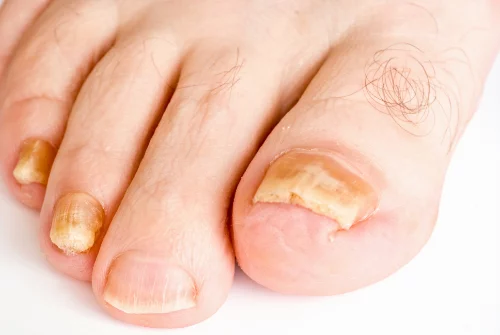
Onychomycosis
Onychomycosis refers to a fungal infection of the nail. Although toenails are more commonly affected, any nail can be involved as well as multiple nails at the same time. Onychomycosis is historically a challenging condition to treat for both patients and providers for many reasons: proper diagnosis, long treatment periods, potential medication side effects, and frequent recurrences.
Symptoms:
While onychomycosis is often asymptomatic and sometimes visually problematic, some patients report associated pain and discomfort when performing activities of daily living.
Findings can include yellowing of the nail, as well as thickened, crumbly nail plates.
Causes:
All onychomycoses are caused by fungi such as Trichophyton spp, yeasts such as Candida, and other various molds that are frequently found in the environment.
Treatment:
Before selecting the proper treatment, your physician may choose to perform a fungal culture on the nail. This technique often employs taking a scraping or clipping of the affected nail and sending it off for testing. In some instances, your provider may select a biopsy to rule out other causes of abnormal nails.
There are many treatment options available and they depend on the individual’s general health, current medications, and other factors. Vinegar soaks may be recommended in mild cases or in those individuals that are not candidates for oral medications. Topical, paint-on prescription “lacquers” such as ciclopirox solution or Jublia® are also utilized in certain circumstances. However, extensive onychomycosis may require oral medications such as terbinafine, fluconazole, griseofulvin and itraconazole to be implemented. Depending on the oral medication selected, treatment durations can span 3-12 months. In recalcitrant cases not responding to prescription medications, your provider may recommend surgical removal of the affected nail.
Treatment expectations:
Onychomycosis tends to be a frustrating condition that oftentimes does not respond to even the most aggressive treatment options. The cure rate is about 40% and the recurrence rate is also quite high. In those individuals that do respond to treatment, results may not become evident for 6- 12 months after therapy has been initiated due to regular nail growth cycle. It is important that you notify your provider of all current medications, underlying medical conditions and any allergies before discussing treatment with them.
If you have questions about your condition, please call us at (704)784-5901.

